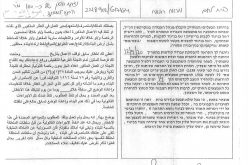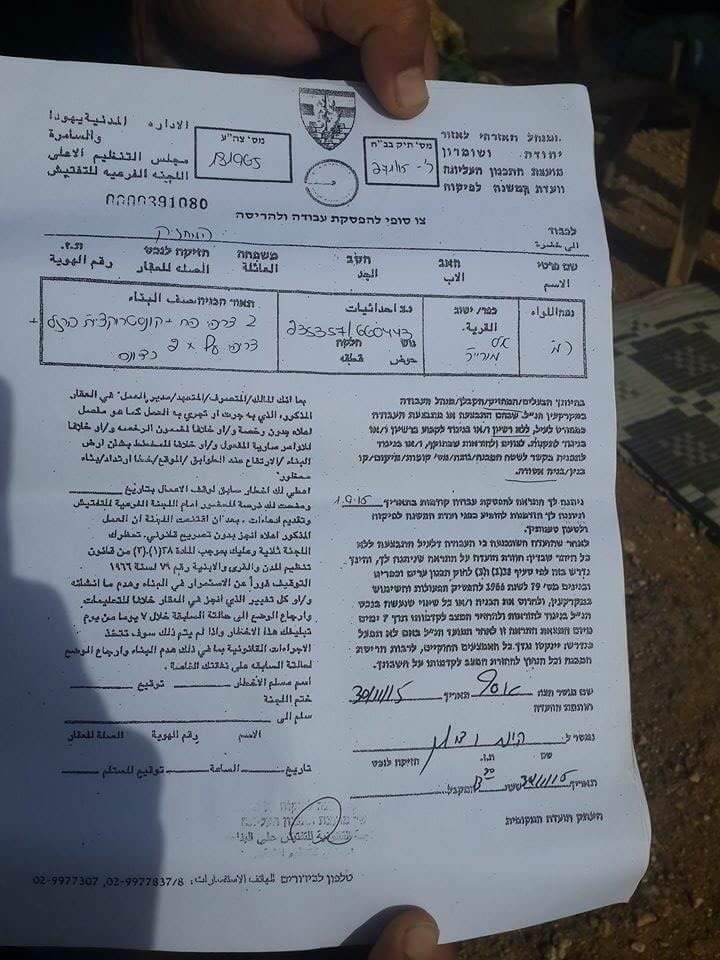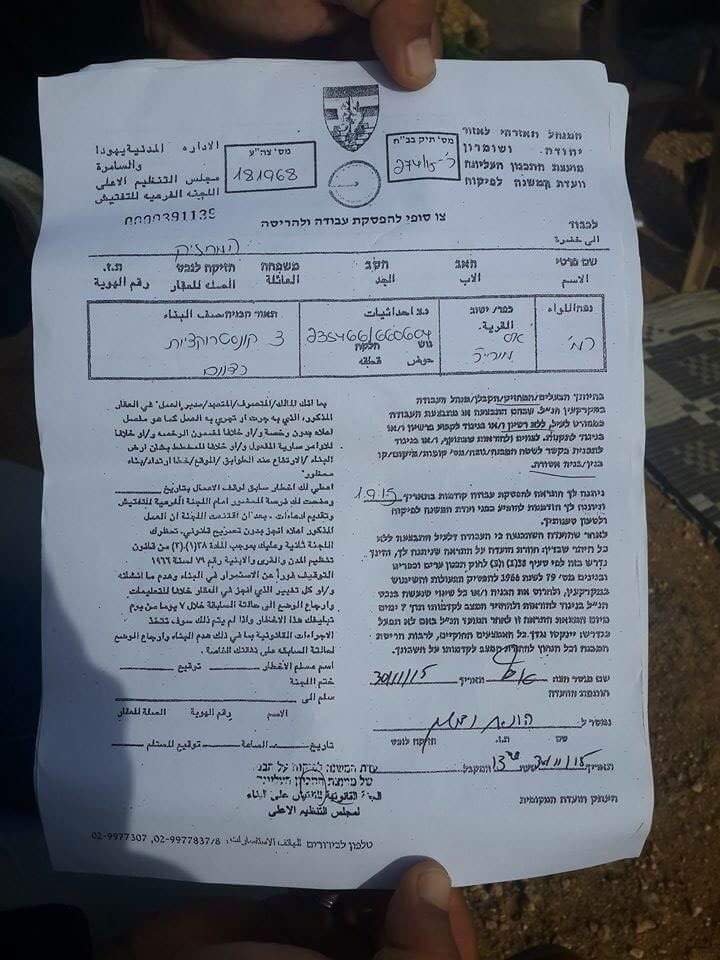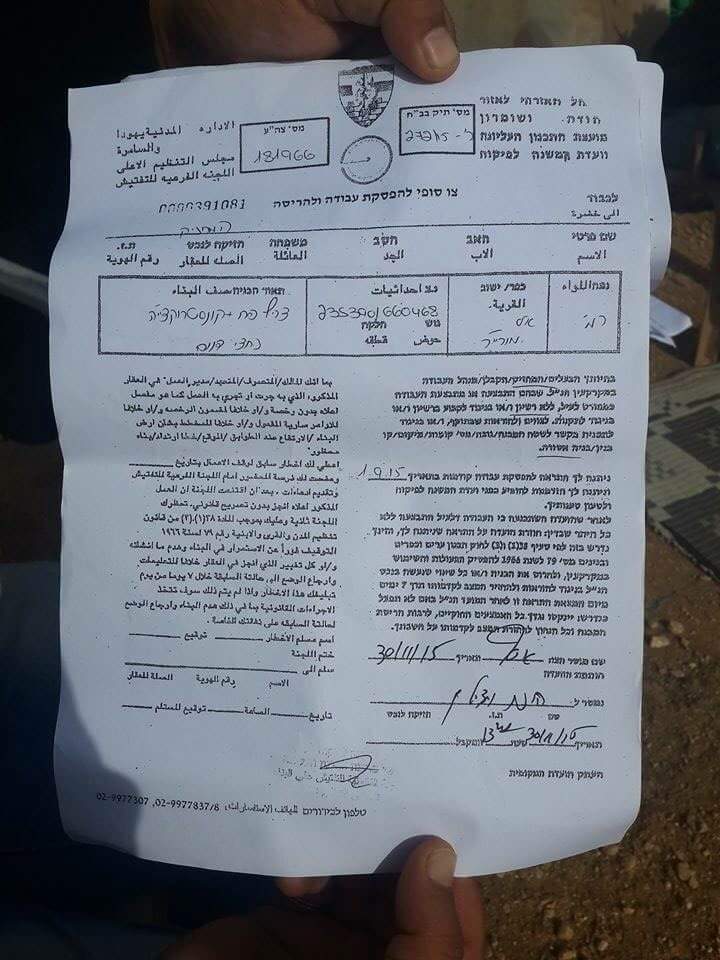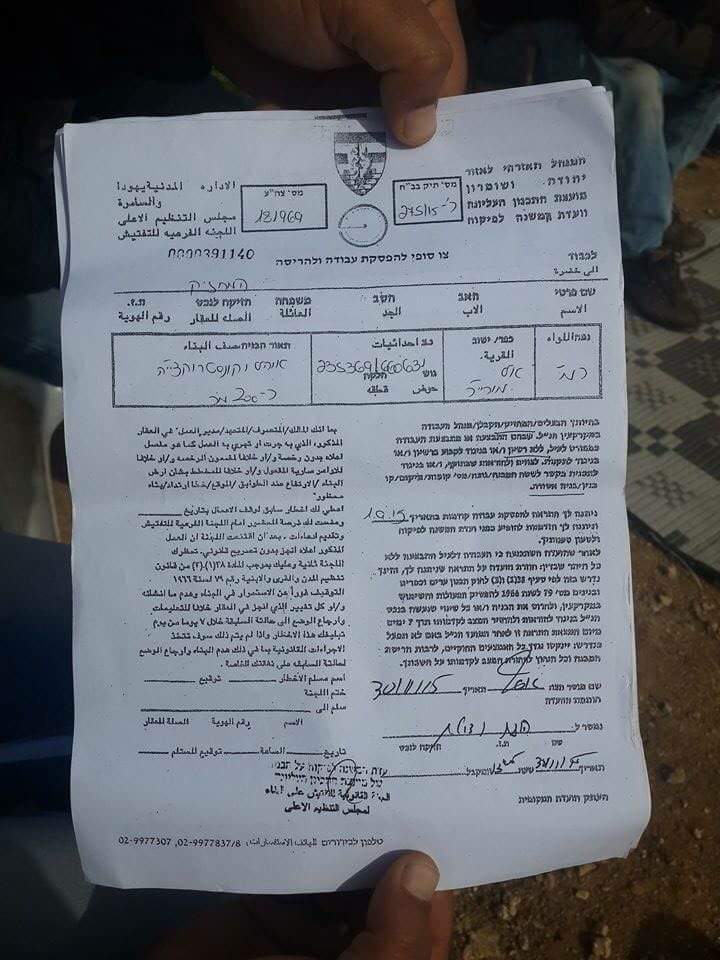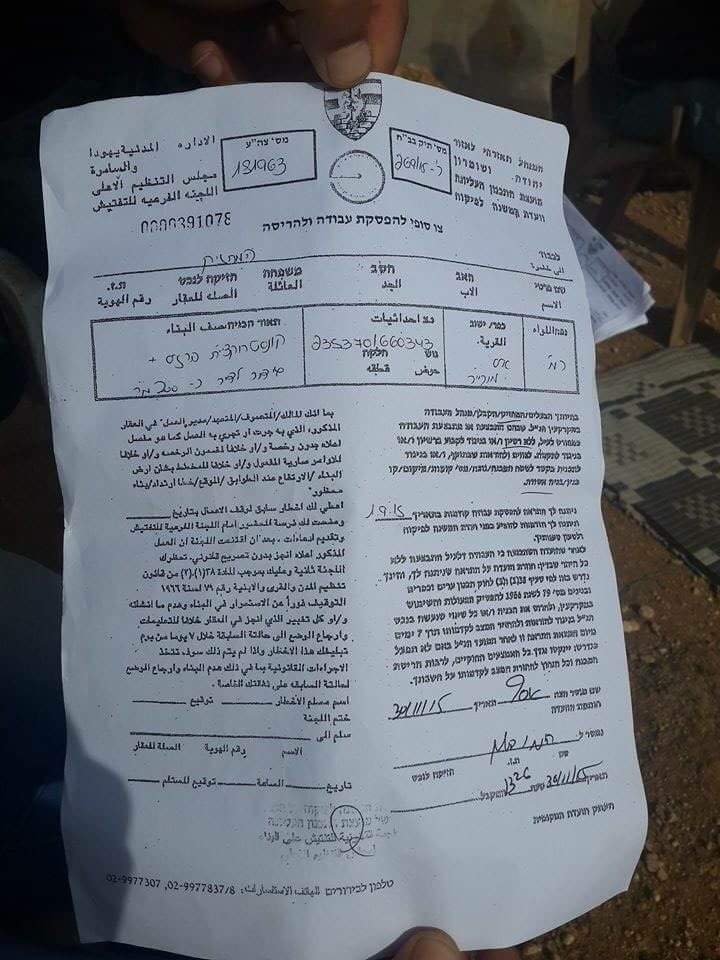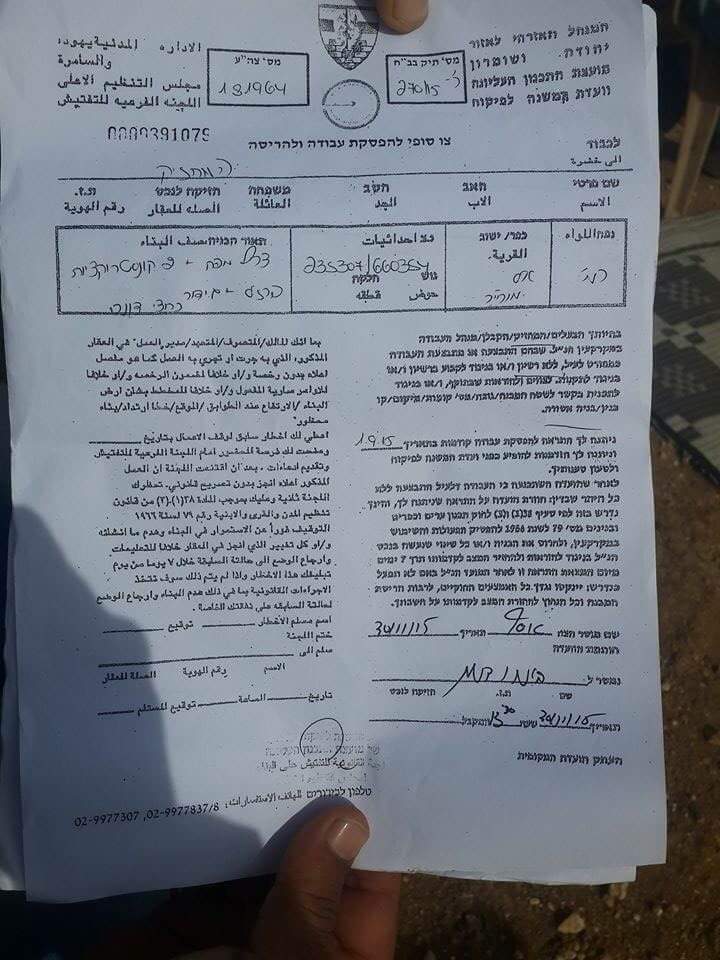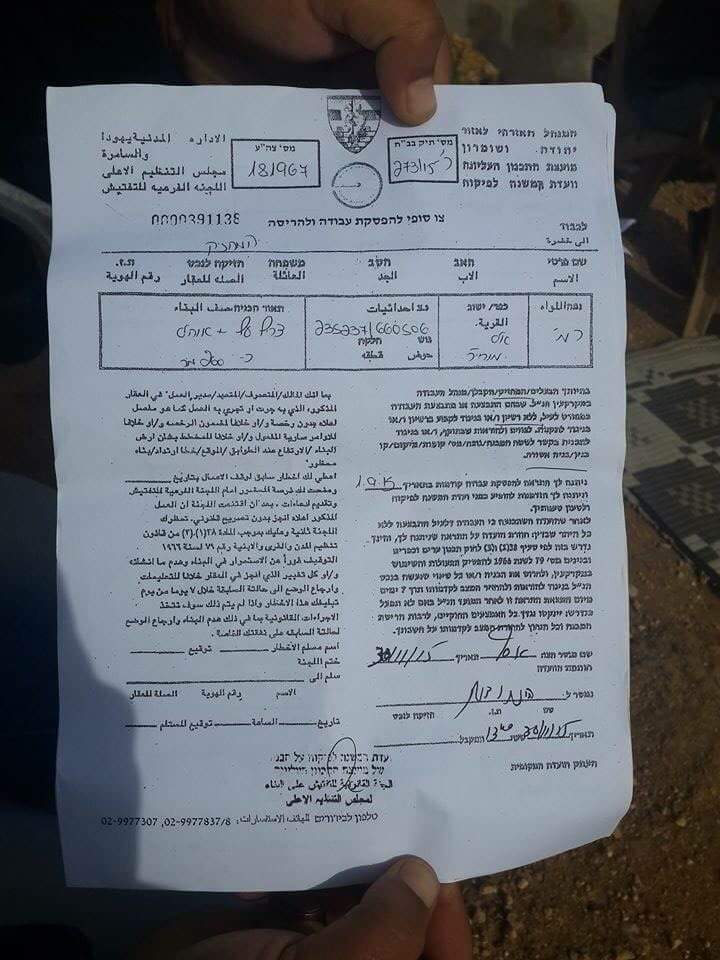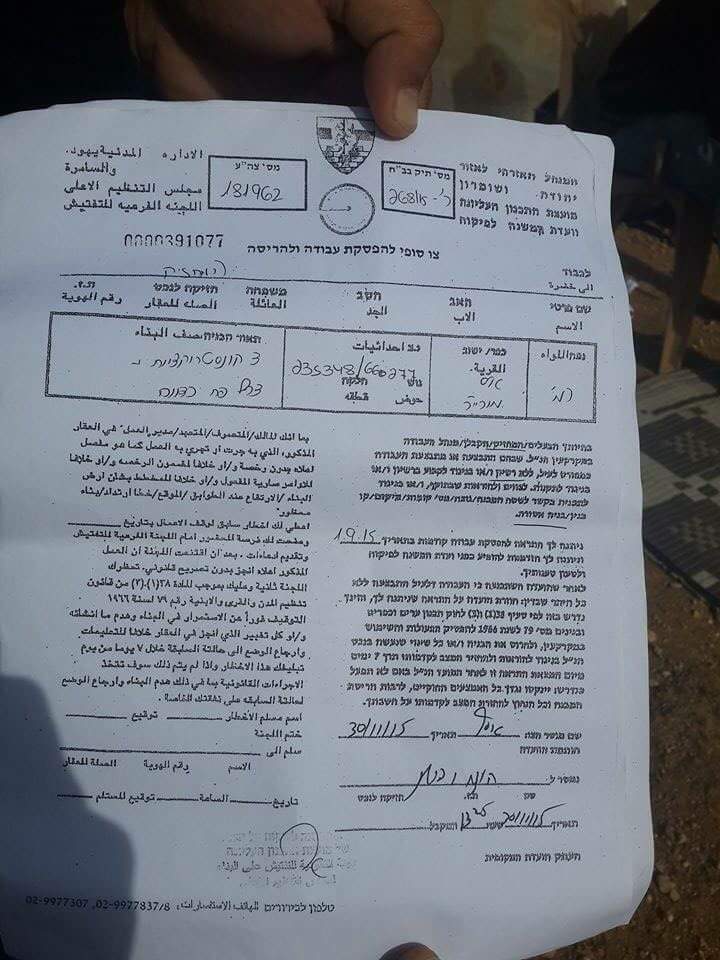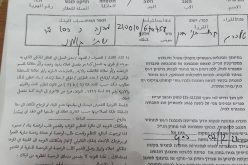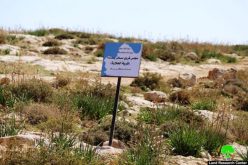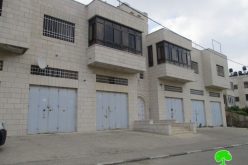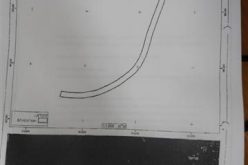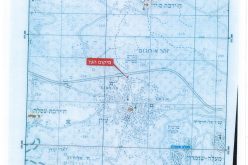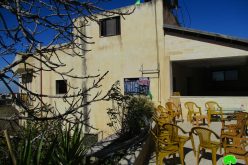Israeli to evacuate an entire Palestinian community in area “C” to make way for a military base
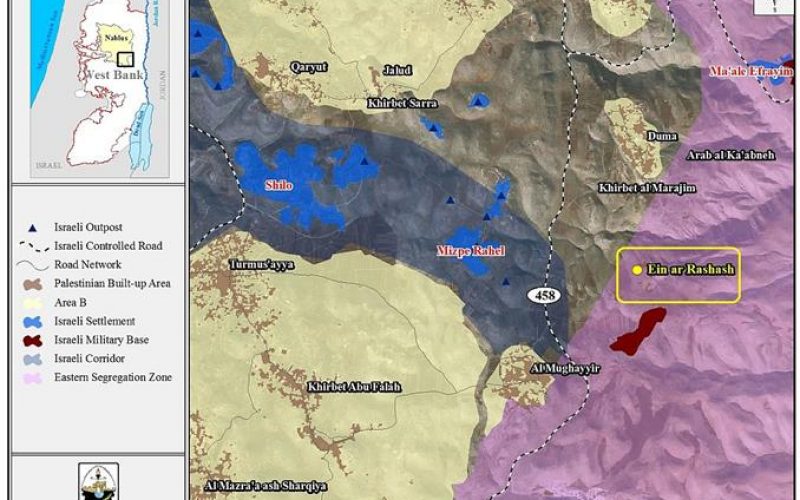
Israeli Demolition of Palestinian structures[1] is hitting Palestinian communities in the area classified as “C”[2] of the occupied West Bank. These demolitions take part in the context of the Israeli occupation efforts to pressure the Palestinians into voluntary transfer, and to facilitate the annexation of their lands to the interest of building and expanding Illegal Israeli settlements and outposts in Area “C”. Statistical data of the Applied Research Institute – Jerusalem (ARIJ) of the year 2015 showed that Israel demolished more than 480 homes and structures in more than 60 villages and communities in Area “C”. Note that in Area “C”, it is obligatory for Palestinians to go to the Israeli Civil Administration in order to obtain building permits. Any construction, whether it is for private homes, commercial or agriculture structures and infrastructure, must be approved by the Israeli Civil Administration. The Israeli Civil Administration in return, imposes severe restrictions on building in Area “C” and also avoids to approve master plans for Palestinian communities located within the area.
Evacuation and Demolition of an entire Palestinian community south of Duma village
On the 28th of January 2016, the Israeli Occupation Authorities verbally notified residents of Ein Ar-Rashash Bedouin community south of Duma village in Nablus Governorate of their decision to demolish all the community’s homes and structures and evacuate its inhabitants (estimated at 85 people living in 30 residential tents) by Monday the 1st of February 2016.
Earlier on the 30th of November 2015, the community of Ein Ar Rashash received findal stop-work and demolition orders which targted the entire community homes, agricultural structures and animal pins. Below is a copy of the orders
Photos 1-8: Copies of the military orders received on the 30th of November 2015 in Ein Ar Rashash community
It seems that the Israeli Occupation Authorities want to make way for the military Army base bordering the community of Ein Ar Rashrash from its south. Today, the military base already occupies 356 dunums of Duma’s village lands and maintains tight control over the Palestinian land nearby. Palestinian herders and farmers are denied access to the lands in close proximity of the base. Additionally, the military base constantly represented a threat to the lives of the Palestinians living nearby due to the Israeli Army’s trainings usually carried out there. See Map 1

Map 1: The threatened Ein Ar Rashash community south of Duma Village.
Additionally, Ein Ar Rashash Bedouin community is located in the part of Duma village situated in the eastern terrain of the West Bank which Israel intends to transform into a de-facto “Eastern Segregation Zone”. Over the years of the Israeli occupation, Israel has imposed measures on this part of the West Bank, starting by declaring vast areas as ‘Closed Military Zones’, followed by the building of settlements and outposts, and taking over lands for agricultural purposes and the construction of bypass roads, which severely ceased the Palestinian urban and economic development over the years. In addition to that, the Israeli Segregation Wall plan in the occupied West Bank didn’t not apply to the Eastern terrain of the West Bank due to the to the physical characteristics of the area; therefore, Israel sought to create a system of controlled access checkpoints established along the Jordan Valley and the shores of the Dead Sea to increase the suffering of the Palestinian people living there and consequently driving them out of the area.
The military base south of Ein Ar Rashash community is connected to the Israeli Bypass Road Number 458 via a dirt road that was specifically constructed for the use of the military base. On the other hand, the community of Ein Ar Rashash lacks the basic necessities of life in the area and barely can afford for a decent living.
Israeli Demolition Policy in International Law
Israel constantly takes actions to strengthen its hold on Area “C” which also includes Settlements, Israeli bypass Roads, outposts, Israeli agricultural areas, etc …, and continues to use the area’s natural resources for the benefit of its own settlers. It facilitates the process of issuing building permits to Israeli settlements in spite of the fact that their existence stands in violation of the international law. Statistics of the Applied Research Institute – Jerusalem (ARIJ) of 2015, indicate that the Israeli authorities granted the Israeli settlements in areas 'C' building permits for around 9000 settlement units in 29 Israeli Settlements in the occupied West Bank, while continues to target Palestinian communities in area C for the lack of building permits.
The Fourth Geneva Convention of 1949 also clearly prohibits the destruction of Palestinian homes. Article 53 of the Convention states: ''Any destruction by the Occupying power of real or personal property belonging individually or collectively to private persons, or to the State, or other public authorities or social or cooperative organizations is prohibited, except where such destruction is rendered absolutely necessary by military operations.'' Such policies target the civilian population of the Occupied Palestinian Territories and thus cannot be excused on the basis of military necessity.
In fact, Israel's home demolition policy is also a fundamental violation of the Fourth Geneva Convention, Article 147 of which clearly prohibits, ''extensive destruction and appropriation of property, not justified by military necessity and carried out unlawfully and wantonly.'' According to the Convention, violations of Article 147, including the destruction of civilian infrastructure such as homes, constitute a 'grave breach' of the Convention and should be prosecuted as War Crimes.
Also article 23 of the Hague Convention of 1907 indicates that ' Extensive destruction and appropriation of property not justified by military necessity and carried out unlawfully and wantonly is a grave breach of the Convention';
The universal Declaration of Human Rights Adopted and proclaimed by General Assembly resolution 217 A (III) of, December 10, 1948, Article 17 reads that 'No one shall be arbitrarily deprived of his property.' Which means it bans Israel from destroying or confiscating the property of the Palestinians at any case.
Furthermore, the International Convention on the Elimination of All Forms of Racial Discrimination (1965) Article 5 provides that 'States' Parties undertake to prohibit and eliminate racial discrimination in all of its forms and to guarantee the right of everyone, without distinction as to race, color, or national or ethnic origin, to equality before the law, notably in the enjoyment of the following rights: … (e) in particular … (iii) the right to housing'.
[1] Livelihood structures include commercial structures, animal shelters, storage, water wells, educational structures and farmland.
[2] Area (C): Palestinians have responsibility for civil life such as economics, health, and education; however, Israel retains full control over security and administration related to territory. (Area 'C' comprises 61% – (3,456,442 Dunums) of the total West Bank area)
Prepared by
The Applied Research Institute – Jerusalem

Related Articles
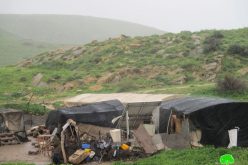
Halt of work military orders on agricultural and residential structures in Khirbet Ras Al-Ahmar/ Tubas governorate
